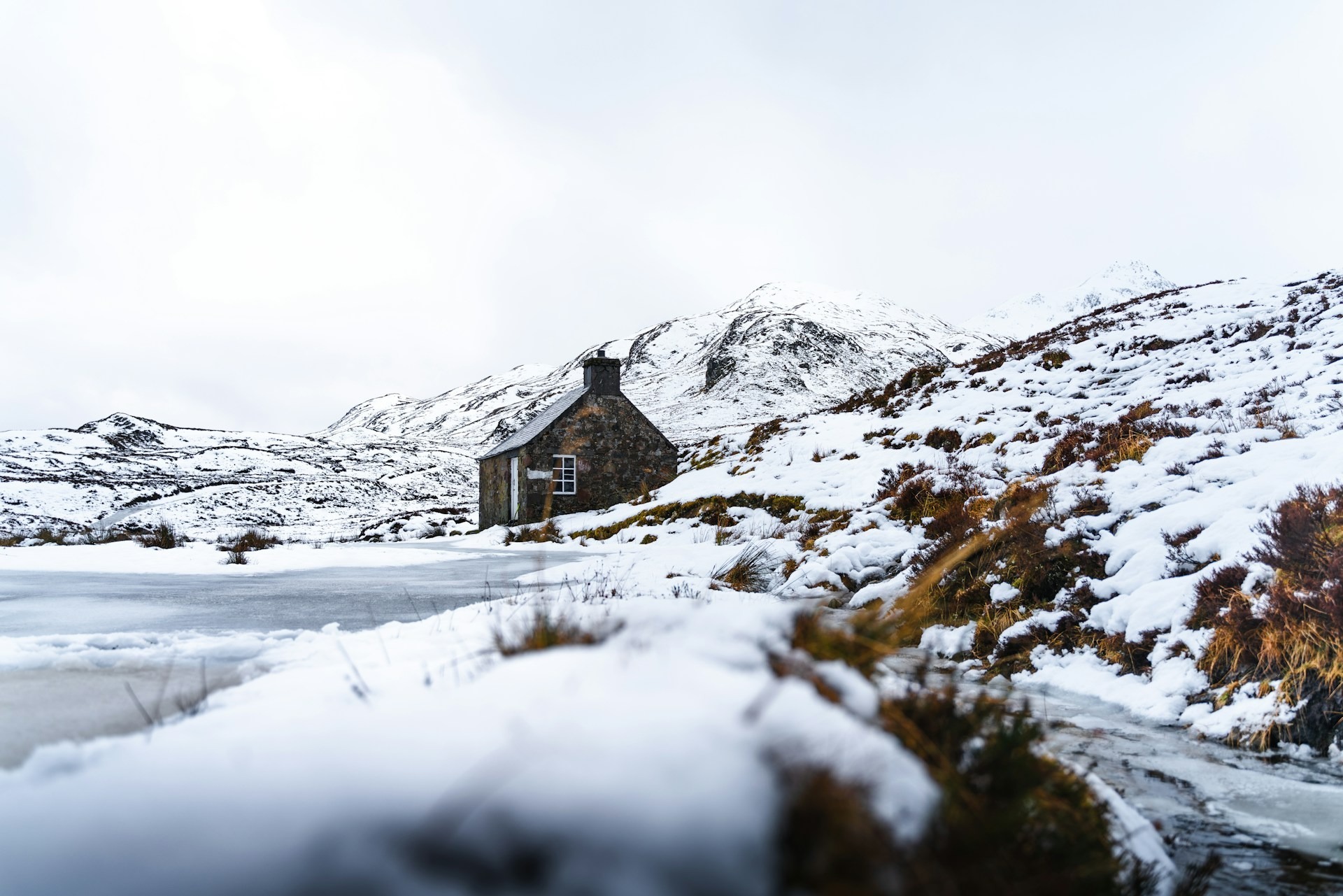In her new book "Bothy: In Search of Simple Shelter", Kat Hill follows a well-trodden path

Bothy: In Search of Simple Shelter (William Collins) by Kat Hill
In the summer of 1847, Oxford academic Arthur Hugh Clough, in a slump, travelled north to the Scottish Highlands seeking solitude, solace, a direction forward. There, he settled into a “Hesperian seclusion,” in a “pleasant, quiet, sabbatic country inn”, “out of the realm of civility”. The following year, he published The Bothie of Toperna-fuosich, a narrative poem of love and adventure.
In the summer of 2020, Oxford academic Katherine Hill, in a slump, travelled a similar path. She settled into a small mountain lodge, in the belief that “bothies would provide me with a kind of shelter as I navigated the complicated path away from a life that was making me unhappy.” In 2024, she published Bothy: In Search of Simple Shelter, a work of love and adventure.
Bothies are buildings found in the hinterland of the British countryside, often old farm structures, croft houses or stalking lodges. Kept unlocked and free to use, these simple spaces are primarily used by outdoor enthusiasts as overnight lodgings. There may or may not be a fireplace, a table, a raised structure for sleeping, some leftover accoutrements from previous visitors. Through this inherent minimalism, Hill uses “bothy culture” as a conduit “to examine the appeal and value of a simpler way of being, as well as the problems it throws up.” Hovering above that investigation is a search for acceptance into a community “built on a humbler sense of people sharing community in places that are a little damp, sometimes muddy, often smoky and dark”.
In every chapter we find the author in a different bothy (11 in Scotland, one in Wales), usually escaping some undetailed stress, pressure, anxiety. Upon arrival, she flips through the “bothy book”, or guest log, and from there creates, through a series of sometimes tortured assumptions, an essay framed around a theme: secrets, walking, wilderness, climate change. Yet what begins as an interesting inquiry ends as a kitsch homage to the life pastoral.
That Clough doesn’t feature in Hill’s book at all seems an odd omission, given her background as a historian and the similarities of their themes. Compare Hill – “The apparent simplicity of everything you do in a bothy made me feel at peace … I sought a respite from the stresses of life … That sense of walking away from the world into the wild …” – with Clough: “This fierce furious walking—o’er mountain-top and moorland / Sleeping in shieling and bothie, with drover on hill-side sleeping / Folded in plaid, where sheep are strewn thicker than rocks by Loch Awen / This fierce furious travel unwearying…”
Hill might not mention tartan or sheep, but the Victorian idea of a better world to be found in nature, poverty and “simple folk” still penetrates modern nature writing, as urban and suburban writers individually discover over and over again the virtues of a stroll in the countryside.
Hill shares a lot of the characteristics of other British nature writers: a tendency to use Latin; the predictable tutting at the excesses of the Global North; frequent soliloquies on guilt and guilty pleasures. Self-interrogation can undermine the authority of non-fiction, as it does here where Hill doubts and redoubts herself. Post-statement qualifiers like “Maybe that’s all irrelevant, or maybe it’s just virtue-signalling from my position of privilege” appear again and again. I found myself imploring Hill to make a bold statement and stick with it.
I have schlepped to dozens of bothies across Scotland, including some of those mentioned by Hill. Arriving at one after a long walk is indeed a satisfying experience, like cool water on scalded skin. I’ve found each of them different, sometimes alone, sometimes occupied by a rogue’s gallery of drunks, intellects, goons, sweethearts, fools and gentlefolk.
Hill had run-ins with strangers, too, but, for one seeking community, she mentions them only in passing. Bothying has much to recommend it – some of it captured by Hill, yet most of it remains out there, for oneself to find.
This article is from New Humanist’s Summer 2025 issue. Subscribe now.


